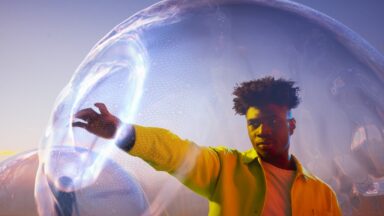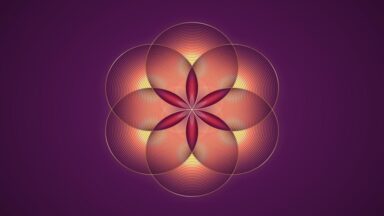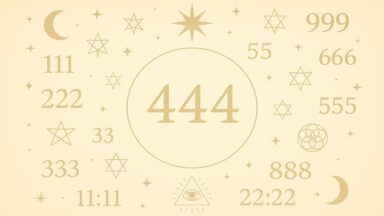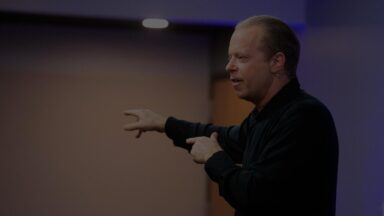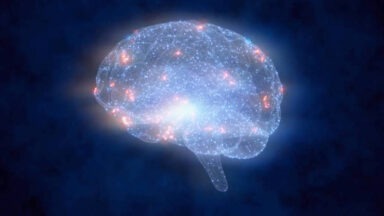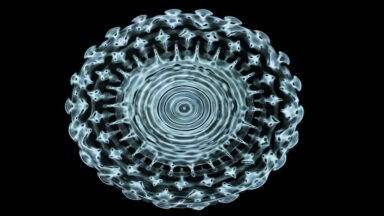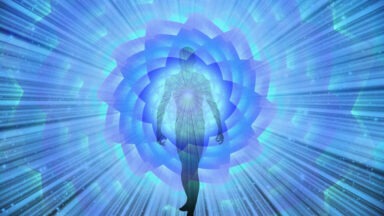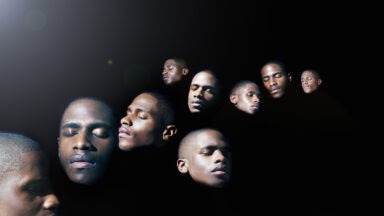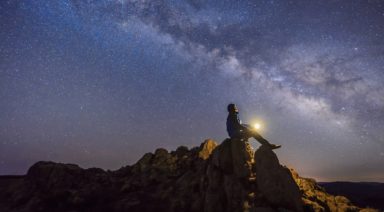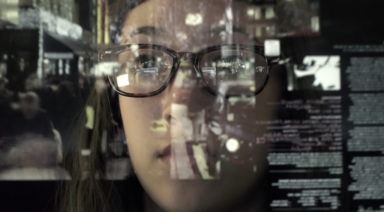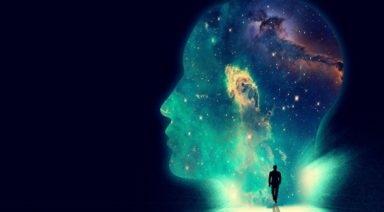What is Astral Projection?
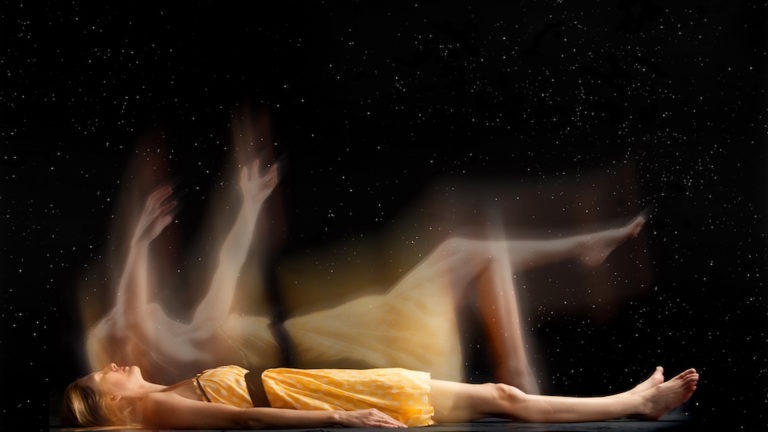
Call it what you like — dream body, astral body, energy body, Buddhist light body, Taoist diamond body, Egyptian ka, Tantric subtle body, Hindu body of bliss — and in Christianity, the experience of different “heavens,” i.e. “I know a man who was caught up to the third heaven. Whether it was in our out of body, I do not know,” from Corinthians 12:1-4. The subtle body is a universal human experience, and apparently part of our standard human design like toenails and kidneys. It is this subtle body that projects astrally and is active during unconscious and lucid dreaming; astral projection and dreaming often go hand-in-hand as “out-of-body” experiences, or OBEs.
The subtle body, when cultivated, can survive the physical body as a matrix for consciousness, and astral projection and lucid dreaming are part of spiritual training paths for subtle body cultivation. Neophytes confuse the subtle body with the soul or spirit, two additional aspects of multi-dimensional humans.
Out of Body Experiences and Astral Projection
The OBE can be intentional or involuntary, as with near-death events when people report finding themselves floating near the ceiling of their hospital rooms, perhaps observing medical staff attempting to revive them. Trauma, illness, or water and food deprivation, as with Native American vision quests, can trigger OBEs. Lucid dream states are opportunities for intentional OBEs. For the purposes of this article, OBEs may be spontaneous, and astral projection a conscious choice, though some would argue otherwise.
Essentially, the OBE begins with an experience of leaving the body and consciously observing it from a detached perspective. With practice and lucidity, awareness can be directed to locations or activities like flight. Yes, flight. If you’ve had flying dreams — literal flying, no 747 required — or being in the sky, you’ve had OBEs. Some say that we have regular OBEs during sleep, often hovering a few inches over our physical bodies.
Neuroscientists are puzzled — while the experience is no longer dismissed out of hand by medical professionals, science holds the view that OBEs involve neurological or brain dysfunction. After his own experience, Dr. Raymond Moody MD became interested in near death OBEs, and for decades interviewed hundreds of experiencers and collected data, defining common qualities of OBEs. Moody identified nine common elements of a near-death OBE — some experiencing all, some, only two or three.
Benefits of OBE
The tantrics mastered lucid OBE and dream states to overcome the fear of death by learning that we are not our “bodies.” They also discovered that the physical body can experience deep healing during OBEs — the mind can be tough on the body. And rather than losing time to practice meditation during sleep, yogis continued working through the night while the body rested.
Some athletes learn lucid dreaming to practice and visualize their game. By working in a dream or out-of-body, not only do they visualize, they have a “felt sense” of their practice, and can actually acquire the muscle memory for winning habits. Others benefit from the opportunity to explore past lives as well as accelerated personal development.

It is our energy, or subtle body that comes and goes from our physical form.
Astral Projection Methods
There are dozens of methods to learn conscious OBE and astral projection. There are two approaches — one is to keep the mind awake while the body falls asleep. It’s tricky — the mind wants to do what the body is doing. The goal is to take the body into deeper and deeper states of relaxation without drifting into unconsciousness. Yoga Nidra is one method. Once the body enters sleep state, practitioners simply “roll” out of their physical form.
Ancient yogis would tie two frogs together before sleep. Once tied, the frogs would continuously croak— a yogi would use the sound to anchor awareness as the body drifted into sleep, and either leave the body, or enter lucid dream states. If, during a dream, the yogi could no longer hear the frogs, he/she knew lucidity had been lost, and could “wake” again within the dream.
How to Astral Project/Travel
Monroe Institute Steps
Bob Monroe, founder of the leading research organization in the field of human consciousness called The Monroe Institute, penned a body of work titled “Journeys Out of the Body” in 1971 in which he provides a detailed outline for how to astrally project one’s self in seven steps:
- Step 1: Relax, both physically and mentally.
- Step 2: Enter a hypnagogic state, or half-sleep.
- Step 3: Deepen the state by prioritizing mental sensation over physical sensation.
- Step 4: Pay attention to the presence of vibration in your environment, which becomes apparent in a state of deep attention.
- Step 5: Incur the vibration in your physical body, and relax into its presence. The purpose of this is to gently jiggle the subtle body out of the physical body.
- Step 6: Focus your thoughts on leaving the limbs and the torso, and try to do so one at a time.
- Step 7: Known as “lifting out,” focus on effortlessly drifting out of your physical body.
The Astral Projection Rope Technique
From the work of Robert Bruce, founder of the Astral Dynamics movement, the rope technique is regarded one of the most accessible astral projection methods.
Step 1: Relax the physical body by visualizing each muscle.
Step 2: From your space of relaxation, enter a vibrational states; this should feel like an amplified version of a cell phone’s vibration mode pulsations coursing through the body.
Step 3: Imagine a rope hanging above you.
Step 4: Using the astral, or subtle, body, attempt to hold on to the rope with both hands. The physical body remains completely relaxed.
Step 5: Begin to climb the rope, hand over hand, all the while visualizing reaching the ceiling above you.
Step 6: Once you are aware of your full exit of the physical body, you are able to explore the astral plane.
Lucid Dreaming Techniques
Again, there are numerous lucid dreaming techniques. Some are designed to train the sleeper to wake within the dream, others offer methods of staying lucid while letting the body fall asleep.
A Nootropic Approach
Yes, it’s sounds weird. Nicotine has specific actions on brain chemistry — but no, it’s not about smoking. Considered a cognitive enhancer, nicotine is gaining fans among biochemical brain hackers.
Many, using nicotine patches to quit smoking, have inadvertently discovered what happens when they forget to remove a patch before sleep. Nicotine can induce hyper-realistic, but bizarre dreams that are so outrageous that many simply say to themselves, “Omg. This MUST be a dream. It’s too nuts to be anything else.” And voila — lucidity is attained. This is not an endorsement of the method, as many report nightmares when using nicotine.
Lucid Dreaming With Habit and Repetition
We attain lucidity the instant we recognize we’re in a dream state. Some people train by asking themselves, several times a day for days or weeks, “is this a dream?” The question eventually gets stuck in the place songs and jingles get stuck and are hard to unstick — things like “Afternoon Delight” by the Starlight Vocal Band. You know what we’re talking about.
The premise is that the question begins to habitually repeat by itself, and that eventually the mind will ask during a dream. When the dreamer answers, “why yes, this IS a dream!” they achieve lucidity.
The best opportunities for becoming lucid within a dream are during REM (rapid eye movement) sleep. This stage happens in the first two hours after we fall asleep and before we wake up. By waking and going back to sleep during the night we increase REM sleep time. Some use the sleep/wake method by setting interval alarms during the night, getting up for a few minutes, and going back to sleep with an intention of keeping the mind awake. If awakened during a dream, immediately go back to sleep — if possible, re-enter the dream with lucidity.
Lucid Dreams: Can Dreaming Be a Spiritual Practice?
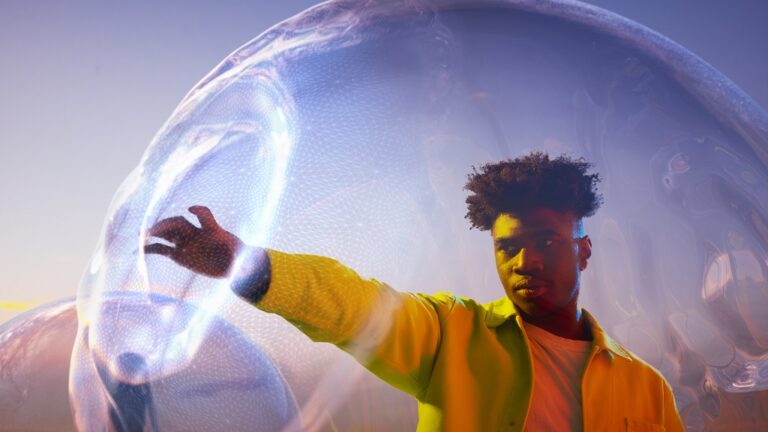
Lucid dreams are those in which people are aware that they are dreaming while still asleep. This ability not only facilitates the conscious manipulation of the dream but also serves as a valuable tool for personal and spiritual growth. In this article, we explore what lucid dreams are, how to induce them, and their potential for spiritual transformation.
Table of Contents
- What Are Lucid Dreams?
- 5 Techniques to Induce Lucid Dreams
- What Is the Purpose of Having Lucid Dreams?
- Lucid Nightmares: How to Manage and Transform Them
- Dreaming as a Spiritual Tool
What Are Lucid Dreams?
Lucid dreams are those in which the dreamer is aware that they are dreaming and can, in many cases, control the dream. This phenomenon can occur spontaneously or through the use of specific techniques that enhance lucidity. Lucid dreamers can interact with the dream environment, make conscious decisions, and explore their scenarios with full awareness.
This capacity of control and awareness in the dream has multiple applications, from problem-solving and practicing skills to exploring deeper aspects of the self. Lucid dreams also offer a path to confront and transform recurring nightmares, turning them into less disturbing and more enriching experiences. The practice of lucid dreaming can strengthen the connection between the conscious mind and the subconscious, facilitating greater self-understanding and personal growth.
In the third season of Mystery Teachings, available on Gaia, Theresa Bullard explores how dreams can serve as a spiritual tool. She provides methods and practices to increase lucidity and use sleep time as an opportunity for self-exploration and spiritual development.
5 Techniques to Induce Lucid Dreams
Inducing lucid dreams can be achieved by implementing habits and techniques that prepare the mind to recognize the dream state. This process involves a combination of daytime and nighttime practices that increase awareness and dream memory. It is essential to maintain a clear and consistent intention to experience lucid dreams, as repeating this intention reinforces the mind’s ability to detect the dream state.
-
Keep a dream journal
Keeping a dream journal is a fundamental tool for inducing lucid dreams. By writing down your dreams every morning, you improve your dream memory and recognize recurring patterns. This habit strengthens your ability to remember dreams and increases the likelihood of identifying that you are dreaming. Additionally, regularly reviewing your dream journal helps you become familiar with the common themes and symbols in your dreams, making it easier to recognize these elements while you are dreaming.
-
Perform reality checks
Reality checks involve performing small experiments during the day to verify if you are dreaming. For example, you can look at your hands and count your fingers, or try to push a finger through the palm of your other hand. If you are dreaming, these actions will produce unusual results. Practicing these reality checks habitually trains your mind to question the nature of reality, increasing the likelihood that you will do the same during a dream, which will allow you to achieve lucidity.
-
Practice the MILD technique (Memorized Induction of Lucid Dreams)
The MILD technique involves repeating a phrase or affirmation before sleeping, such as “Tonight, I will realize that I am dreaming.” This method relies on intention and prospective memory to induce lucidity. By focusing on your desire to have a lucid dream as you fall asleep, you program your mind to remember this desire. This constant practice reinforces your ability to become aware in the dream and increase the frequency of your lucid dreams.
-
Use the WBTB technique (Wake Back To Bed)
The WBTB technique involves waking up after about five or six hours of sleep, staying awake for 20–30 minutes, and then going back to sleep with the intention of having a lucid dream. This method takes advantage of the fact that REM dreams, where lucid dreams occur, are more frequent and longer in the second half of the night. Being awake briefly disrupts your sleep cycle, increasing your mental alertness as you fall back asleep, which facilitates lucidity.
-
Meditate before sleeping
Meditating before sleeping is an effective practice for inducing lucid dreams. Meditation helps calm the mind and reduce stress, creating a mental state conducive to lucidity. Practicing mindfulness and concentration before sleeping improves your ability to maintain awareness while you sleep. Additionally, meditation can help you establish a clear intention to have a lucid dream, facilitating the conscious transition into the dream state.
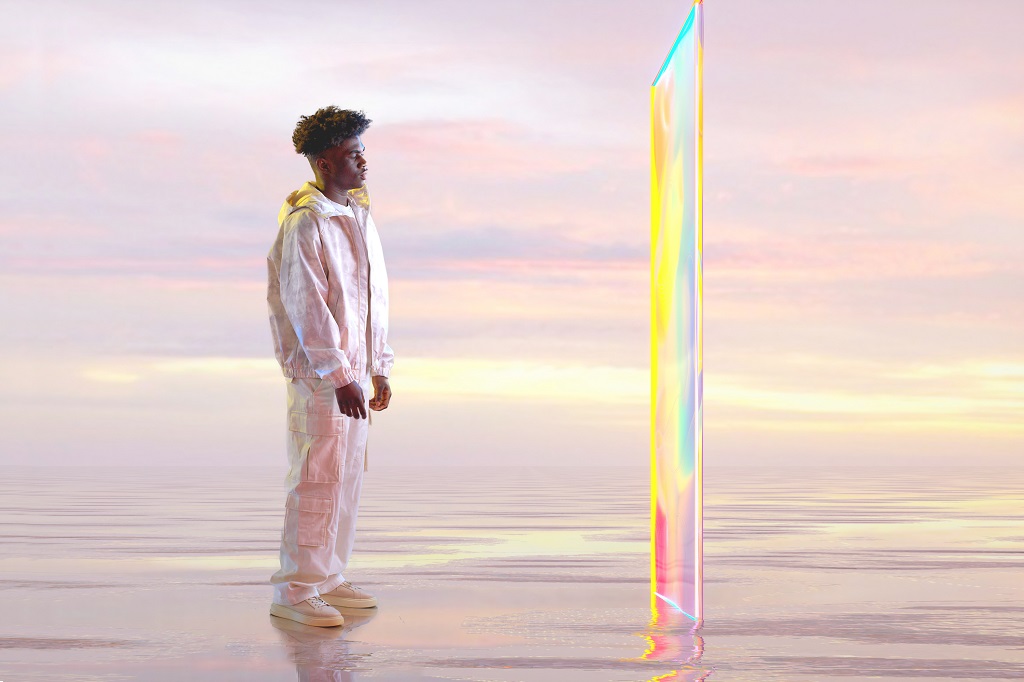
What Is the Purpose of Having Lucid Dreams?
Having lucid dreams is not only a fascinating experience, but it also offers multiple practical and spiritual benefits. Lucid dreamers can use this state to explore and resolve personal problems, practice skills, and experience a deeper connection with their subconscious. Lucid dreams are a powerful tool for personal growth, enabling a profound exploration of the mind and spirit.
- Overcoming fears: Lucid dreams allow you to face and overcome phobias and anxieties in a safe and controlled environment. This can lead to a reduction of fear in everyday life.
- Problem solving: Using lucid dreams to explore creative solutions to problems can result in unique ideas. The subconscious mind can offer new and valuable perspectives.
- Skill practice: Athletes and musicians, among others, can practice and perfect skills within lucid dreams. This can improve performance in waking life through mental rehearsal.
- Self-knowledge: Lucid dreams facilitate introspection and self-awareness. By interacting with the subconscious, dreamers can discover desires and internal conflicts.
- Spiritual exploration: Lucid dreams can serve as a platform for spiritual and meditative experiences. Dreamers can explore spiritual dimensions and gain a deeper understanding of their inner selves.
Lucid Nightmares: How to Manage and Transform Them
Lucid nightmares are those in which the dreamer is aware of being in a dream but is trapped in a negative experience. The advantage of lucidity is that the dreamer has the capacity to transform the nightmare into a positive experience. To handle a lucid nightmare, it is crucial to first remember that the environment is not real and that the dreamer has control.
An effective technique is to confront and dialogue with the frightening elements of the nightmare. Asking them why they are there or what they want to communicate can deactivate their negativity. This not only transforms the nightmare, but it can also provide information about the fears and internal conflicts that generate it.
Another strategy is to deliberately change the dream environment. By remembering that you are in a dream, the dreamer can try to modify the scene, create protective objects, or fly away from danger. These actions reinforce the sense of control and can turn the experience into something enriching and empowering.
Dreaming as a Spiritual Tool
Dreaming can become a profound spiritual practice. Dreams, especially lucid dreams, allow access to levels of consciousness that are normally outside of our reach. This access can facilitate encounters with spiritual guides, the resolution of internal conflicts, and the integration of forgotten or repressed aspects of our personality.
Lucid dreams can also be a gateway to the exploration of other planes of existence and realities beyond the physical world. Many spiritual practitioners often use lucid dreams for astral travel, communicating with spiritual entities, and receiving teachings directly in the dream state. This exploration not only enriches spiritual life but also provides a greater understanding of life’s purpose and the universe.
Moreover, dreams can serve as a mirror of the individual’s internal state, reflecting both spiritual progress and the areas that need attention. Interpreting and working with dreams can be a powerful way of self-discovery and spiritual growth. Through the conscious practice of lucid dreaming, it is possible to access a deep inner wisdom and transform daily life with the teachings received during sleep.


